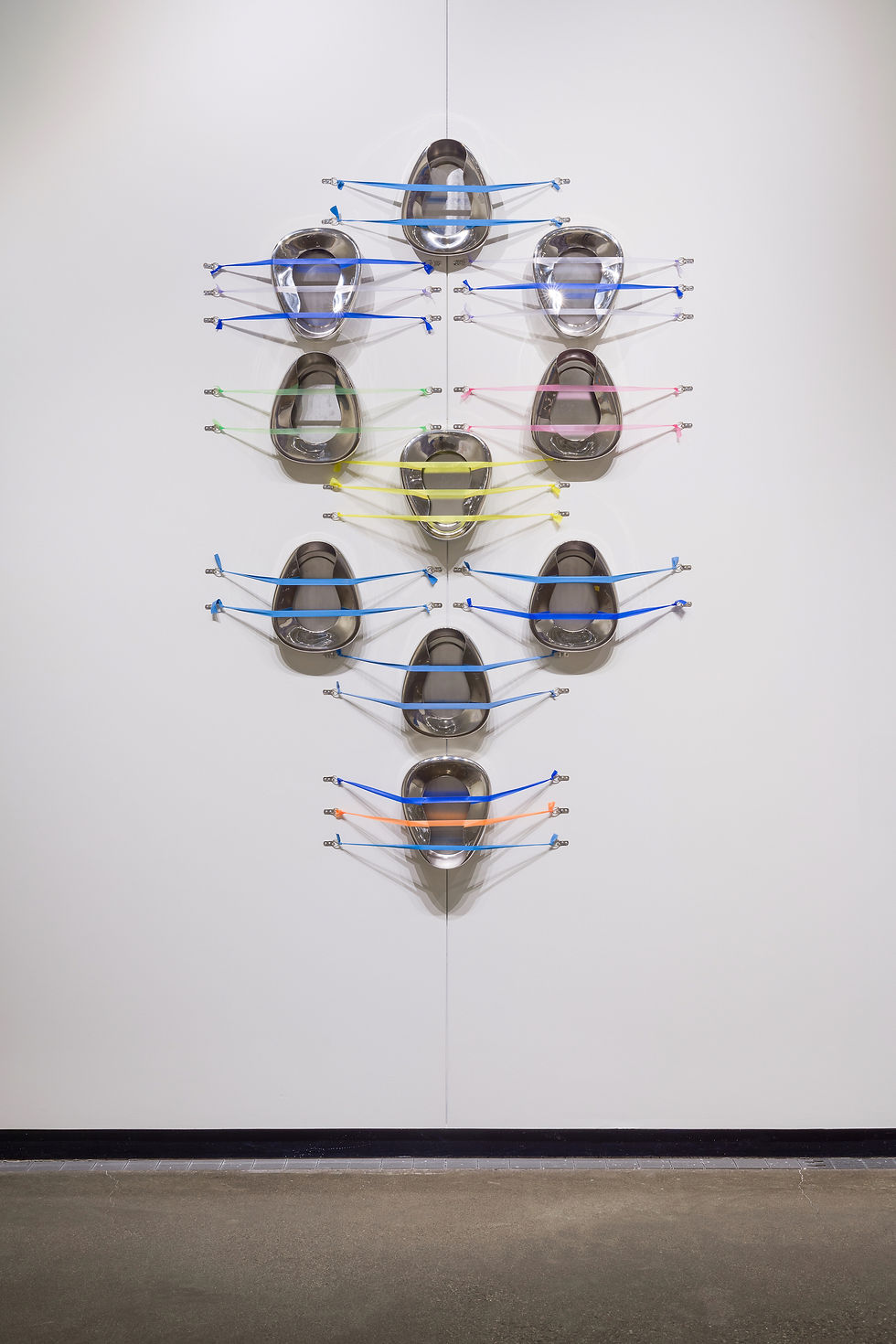Amanda Barr: Tlamanalistli
- Bert Stabler
- Apr 7, 2022
- 2 min read

tlamanalistli (sacrifice)
porcelain, neon, thread, plexi, resin
7 feet x 5 feet x 2 feet
2021
Amanda Barr, artist statement:
Tlamanalistli (or tlamanalitzli) is a term in Nahuatl, an Aztecan language, for “the act of making an offering or sacrifice.” So many lives, literally and metaphorically as we endure quarantines, have been sacrificed these past few years; to capitalism and greed, ablism, racism, bigotry, hate, and misogyny. Many people are unwilling to make the simple sacrifice of wearing a piece of cloth over their face, but have asked the high-risk population to give up our lives so they can go back to normal. This piece is not only about miscommunication, but also trauma from communication.
Native populations, already historically decimated from smallpox and other diseases, have been hit hardest by Covid. This, ultimately, was the reason I chose to make this piece in an Indigenous language. The Spanish conquistadors used the ideological repulsiveness of the Aztec religion’s ritual sacrifice as support for the Conquista, and to this day our culture views them as “savage” and “atrocious.” Looking back at the past couple of years (and European history, Colonialism…) hindsight would say that we don’t have any room to cast judgment. The same year Columbus set sail for the so-called “New World,” Spain began the Inquisition, an operation of state-sponsored torture and executions for religion. The pyramids at Teotihuacán ran with blood the same red as at Wounded Knee, or Salem, or the sands of Afghanistan.
This is the most complex piece in the exhibition, consisting of the neon text behind a loose “curtain” strung with porcelain pills, roses, petals, and slip-dipped masks, cascading down onto a pyramid-shaped pile of porcelain skulls and thistles. The curtain of masks and pills is a direct reference to the COVID-19 pandemic and the very literal issues it has created with communication, as masks get in the way of clear speech and quarantine has isolated and separated us. The mask and anti-mask dialogue, and the now over 700,000 US deaths related to COVID, are further impediments to communication. Conversations become heated as tensions continue to grow, and each death is a new trauma added to the equation. Death is also referenced in the pile of skulls, a nod to both Aztec pyramids and European bone ossuary churches. Such a clearly ordered, careful pile of skulls insinuates some sort of ritual, an unsettling evocation of blood sacrifice and pain. The porcelain clearly echoes the whiteness of bone, which remains calcified inside the ceramic shell, eerie in its fragility.
The red neon evokes feelings of anxiety, fear, evoking the literal color of blood. The skulls seem to stare directly at the viewer, hollow-eyed. Death is part of the human condition, as is a fear of death. Here is the closest this show comes to the idea of trauma itself, not merely the aftermath. The shadows and literal symbols of sickness and death provoke a sense of disquiet and hopefully confront the viewer with not only their own mortality, but their impact on those around them.
Amanda Barr is an artist and curator, and the Director of the University Center Gallery at the University of Montana. She was diagnosed early in life with a seizure disorder, and later with Ehlers Danlos and other comorbidities, as well as Autism and C-PTSD.



Comments